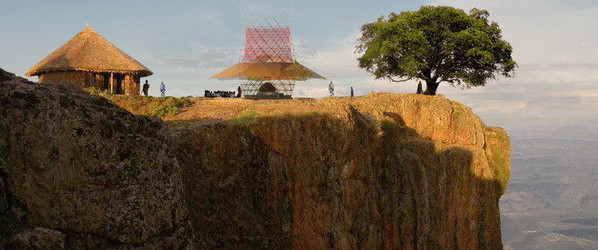A crowdfunding campaign for a project to pluck water out of thin air for use in African villages has failed to reach its US$100,000 goal.
As today’s deadline passed, only US$44,996 had been pledged on Kickstarter.
But the Warka Water project will continue because it has interest from government and NGOs, says its leader Arturo Vittori, an architect at Italian firm Architecture and Vision.
The project started after Vittori’s visit to water-starved parts of Ethiopia in 2012. He designed a pineapple-shaped bamboo and mesh structure on which water from rain, fog and dew collects and drains into a container (see below for a video outlining the design).
The ideas behind Warka Water are used in fog catchers in Chile and Peru. But water experts tell SciDev.Net that this version of the technology is too impractical and expensive to use in Africa.
Warka Water’s architectural beauty and social purpose — it is also intended to replace endangered Warka trees as a traditional meeting place — sets it apart from similar technologies to collect atmospheric moisture, says Vittori. And it can capture dew, which is crucial in arid environments that lack fog.
“Above us in the sky, there are ‘rivers’ we don’t see, passing from the ocean back to the land,” says Vittori. “If you manage to capture them, you can bring water perfectly everywhere you want.”
Vittori envisages mass production of the water towers in Africa. The structure can be assembled by a small team without the need for training. He estimates that each tower would provide 50 to 100 litres of water a day.
Despite the crowdfunding failure, Vittori intends to seek funding from government agencies and NGOs. He is also considering a new series of crowdfunding appeals, each with a US$1,000 target to pay for individual towers for villages.
Pretty — but pretty expensive
“Above us in the sky, there are ‘rivers’ we don’t see, passing from the ocean back to the land. If you manage to capture them, you can bring water perfectly everywhere you want.”
Arturo Vittori, Architecture and Vision
But even if everything works perfectly, at an expected cost of $1,000 per tower and a maximum lifetime of ten years, there are doubts about the project’s practicality.
“This is expensive,” says Neil Noble, a technical advisor at international development charity Practical Action. “There are other forms of fog collection out there that are lower in cost, although they may not look as pretty.”
A spokesperson for the charity adds that international NGOs aim to provide each individual with 20 litres of water a day, in line with WHO standards. This means the tower’s estimated upper production level of 100 litres would barely serve a family, let alone a village.
“While this may be the way forward for very small isolated communities, other options would be better elsewhere,” the spokesperson says. “Our solar powered water pumps in villages in nearby Turkana, northern Kenya, are a better use of resources in larger settlements.”
Vincent Casey, technical support manager for international charity Water Aid, is also sceptical.
“It would cost US$27,500 to serve a community of 50 households,” he says. “The cost of deploying a borehole and handpump for those same 50 households would be between US$9,000 and US$15,000. And the borehole and handpump would be more durable.”
Casey adds that long-term solutions to water access require properly managed supply chains. “These cannot be invented in a shed at the end of someone’s garden or by a product design company in Europe,” he says. “They must be crafted by governments and the private sector in the countries where low access to clean water persists.”








